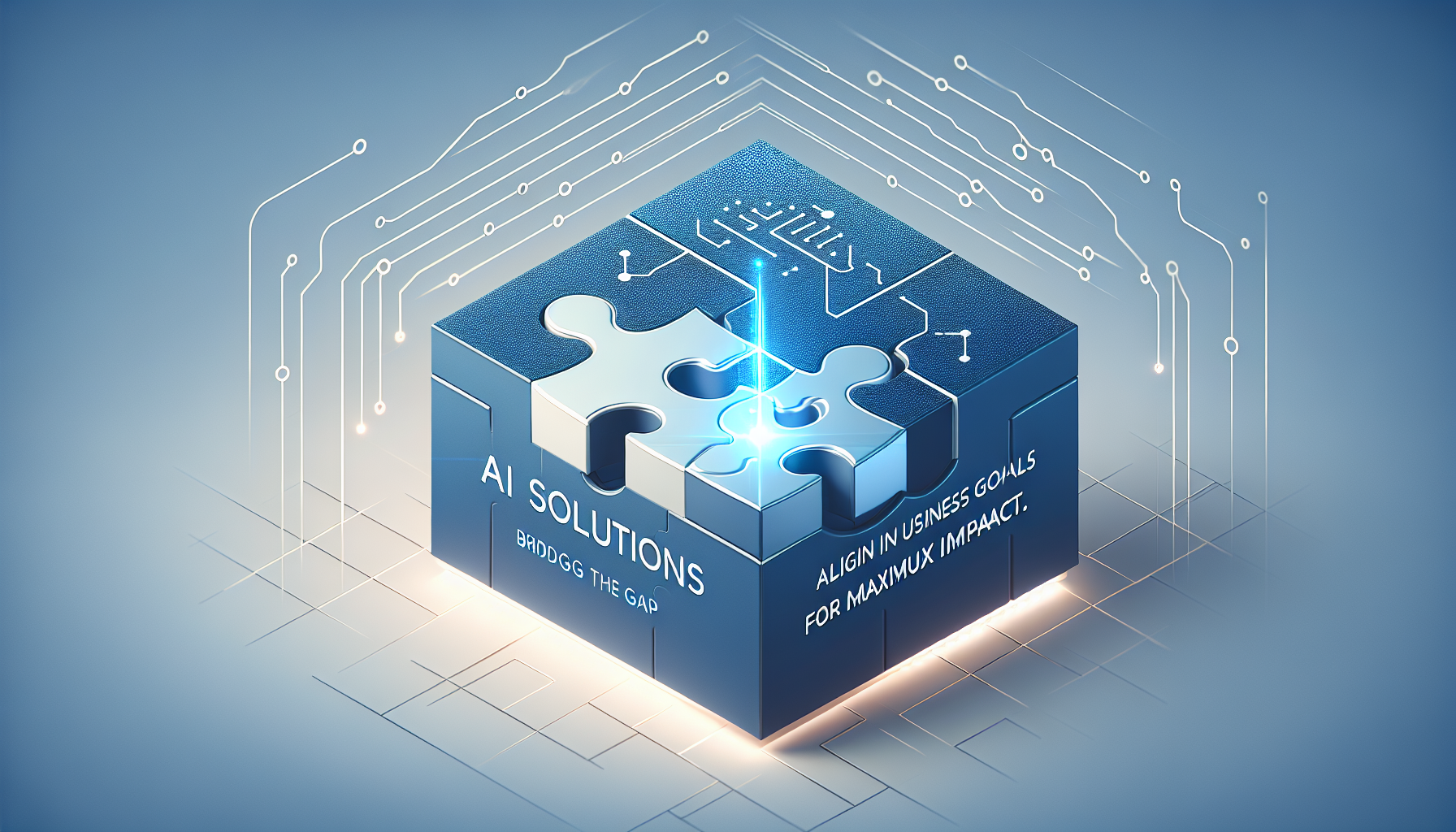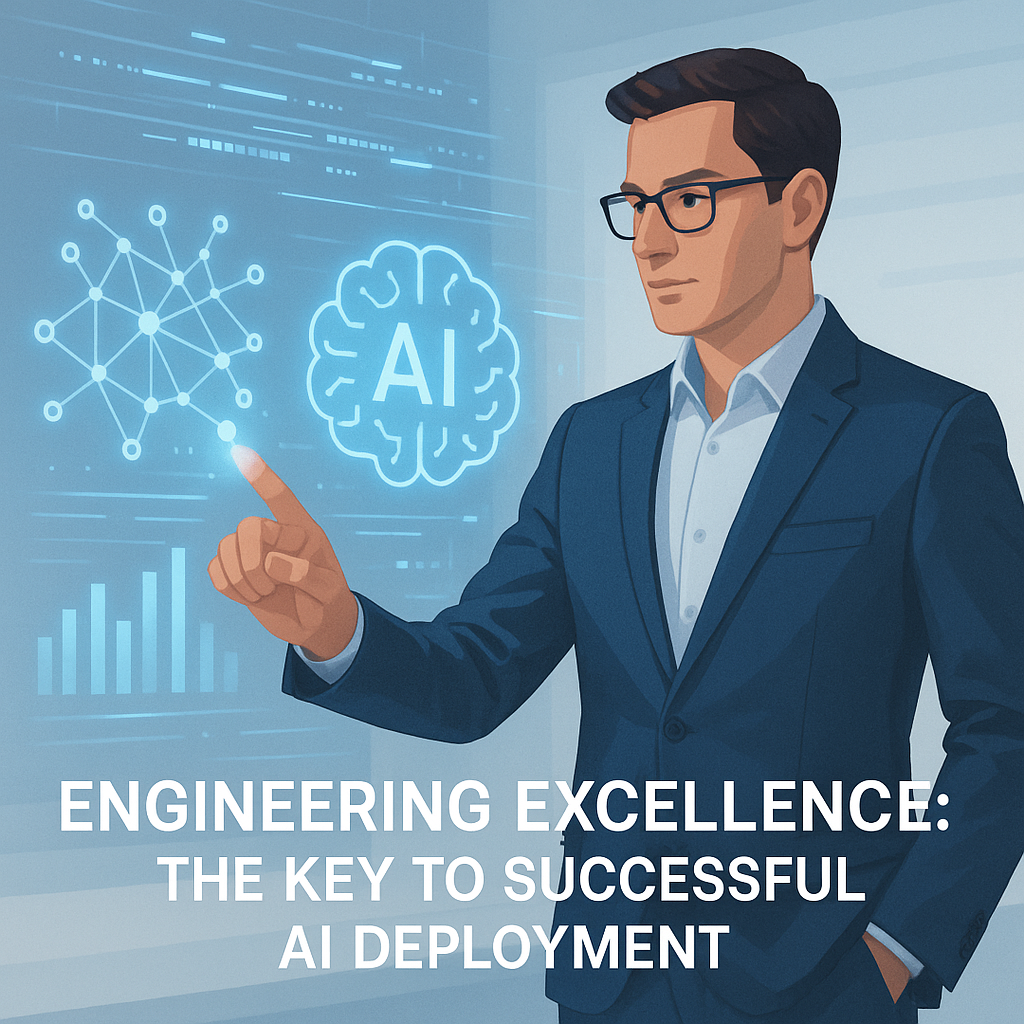Strategic Alignment: The Foundation for Effective AI Integration
In today’s competitive landscape, businesses recognizing the transformative potential of artificial intelligence must move beyond technology adoption to strategic alignment. The true value of AI emerges when organizations seamlessly integrate actionable AI solutions with clearly defined business goals. Achieving this alignment demands a holistic approach—one that encompasses organizational priorities, resource allocation, and an unwavering focus on human-centric outcomes.
Alignment begins with clarity in business objectives. Whether the goal is revenue growth, operational efficiency, customer experience enhancement, or innovation acceleration, articulating these aims in precise terms is essential. This clarity guides the selection, design, and deployment of AI technologies, ensuring they serve as catalysts rather than distractions. AI is not a silver bullet; its strength lies in how well it complements and accelerates pre-established ambitions.
Translating Business Goals into Actionable AI Solutions
The process of translating business goals into actionable AI solutions requires rigorous analytical thinking. It starts with mapping out workflows, processes, and decision points that stand to benefit from automation, augmentation, or insight generation. For example, a retail company aiming to improve customer retention might focus on leveraging AI-powered predictive analytics to anticipate churn and personalize offers.
A successful execution strategy involves cross-disciplinary collaboration. Business strategists, AI specialists, and operational leaders must converge to evaluate feasibility, scalability, and risk. This collaboration should also address data governance and quality, which are foundational for any AI system’s accuracy and trustworthiness.
One approach gaining traction is the use of AI maturity models. These frameworks help organizations assess their readiness and identify gaps in infrastructure, skills, and processes. By benchmarking current capabilities against desired outcomes, companies can develop tailored roadmaps that progressively deepen AI integration while ensuring alignment with overarching goals.
Prioritizing Impact and Value Creation
Effective AI alignment requires a metric-driven mindset. Establishing key performance indicators (KPIs) that reflect both short-term gains and long-term value ensures continuous assessment and course correction. For example, a manufacturing firm deploying AI for predictive maintenance might track reduced downtime, cost savings, and overall equipment effectiveness.
It’s critical to focus on AI initiatives that promise tangible business impact rather than pursuing technology for technology’s sake. This principle safeguards against resource dilution and organizational fatigue. Moreover, prioritizing scalable solutions with clear ROI fosters executive buy-in and sustains momentum for further AI investments.
Furthermore, actionable AI solutions demand seamless integration with existing systems. The synergy between legacy systems and AI tools creates operational continuity, minimizing disruptions. Such integration elevates AI from pilot phases to enterprise-wide adoption, embedding intelligence into the business fabric.
Aligning Resources: People, Technology, and Data
Resource alignment is paramount in bridging AI ambitions with real-world application. A people-first perspective emphasizes upskilling and reskilling existing talent, enabling them to operate alongside AI as collaborators rather than competitors. Embracing a culture of continuous learning empowers teams to harness AI’s capabilities fully and innovate proactively.
Strategically investing in technology infrastructure—cloud platforms, AI frameworks, and automation tools—provides the technical backbone necessary for scalable deployments. Importantly, this infrastructure should support modular, flexible AI architectures, allowing businesses to adapt to evolving requirements without extensive reengineering.
Data is the lifeblood of artificial intelligence. Aligning data strategy with AI goals involves robust mechanisms for data collection, storage, cleansing, and security. High-quality, relevant datasets lead to actionable AI insights, while poor data compromises accuracy, erodes trust, and threatens business value. Organizations must also navigate data privacy regulations proactively to uphold ethical standards and foster public confidence.

Holistic Governance and Ethical Considerations
Aligning AI solutions with business goals also necessitates governance frameworks that prioritize transparency, accountability, and ethical use. Given AI’s potential to influence critical decisions, businesses carry the responsibility to mitigate bias, prevent unintended consequences, and safeguard stakeholder interests.
Deploying ethical AI means embedding fairness assessments and explainability protocols throughout AI lifecycles—from design to deployment. Stakeholders across the organization, including legal and compliance teams, should participate in establishing guidelines that reflect corporate values and societal norms.
A cogent governance model does more than manage risk; it builds trust with customers, employees, and regulators. As Satya Nadella, CEO of Microsoft, noted, “The fundamental question is not, ‘Can we build it?’ but ‘Should we build it?’” This ethos underpins sustainable AI adoption aligned with both business objectives and broader human considerations.
Driving Continuous Improvement through Feedback Loops
The dynamic nature of business and technology demands that AI alignment is not a one-time initiative but an ongoing process. Continuous improvement loops—incorporating feedback from performance metrics, user experiences, and market shifts—enable organizations to refine AI models and update goals accordingly.
Regular audits and benchmarking exercises help identify whether AI solutions continue to serve intended purposes or require recalibration. This iterative approach ensures that artificial intelligence remains adaptable to changing conditions and consistently delivers actionable insights aligned with business evolution.
Moreover, fostering a collaborative culture where insights from frontline employees, customers, and partners inform AI strategy enriches understanding and unlocks new opportunities. Such inclusiveness bolsters organizational agility and resilience in the face of complexity.
Spotlight on Real-World Applications
Consider a global logistics company seeking to reduce transit times and operational costs. By aligning AI initiatives with its business goal—enhanced delivery efficiency—it employed machine learning algorithms to optimize routing and predictive analytics to anticipate demand fluctuations. These actionable AI solutions led to measurable improvements in delivery performance and customer satisfaction.
Similarly, a financial services firm aiming to mitigate fraud risk integrated AI-driven anomaly detection systems aligned to its compliance and risk management objectives. This integration enabled real-time transaction monitoring, reducing false positives and operational workload, thus aligning technological capabilities with stringent regulatory demands.
Such examples underscore the criticality of alignment. The value extracted from AI stems not from technology alone but from how well it is woven into the organizational mission and operational fabric.
The Human Element: Empowering the Workforce
It is imperative to recognize that AI’s promise is amplified by supporting human decision-makers and creators, not by supplanting them. Aligning AI with business goals entails designing systems that augment human intelligence, freeing employees to focus on higher-value, creative, and strategic tasks.
Organizations must invest in change management and communication strategies to ease workforce transitions, dispel fears, and promote adoption. When employees understand how AI complements their roles and contributes to shared goals, engagement and efficacy rise.
As AI continues to evolve, the human-AI partnership becomes a strategic asset. Unlocking this potential depends on alignment processes that respect and enhance human capabilities while advancing business objectives.
Conclusion: From Ambition to Operational Excellence
Aligning actionable AI solutions with business goals embodies a disciplined, strategic journey that integrates technology, people, and processes within an ethical and forward-looking framework. It requires sharp analytical thinking to translate ambitions into concrete initiatives, holistic resource alignment to enable execution, and governance that ensures AI’s impact is responsible and sustainable.
Businesses that master this alignment are positioned not only to harness artificial intelligence effectively but to transform it into a competitive differentiator—one that drives measurable value while empowering their workforce and preserving trust. The pathway to AI-enabled success is clear: integrate thoughtfully, govern consciously, and iterate continuously.



